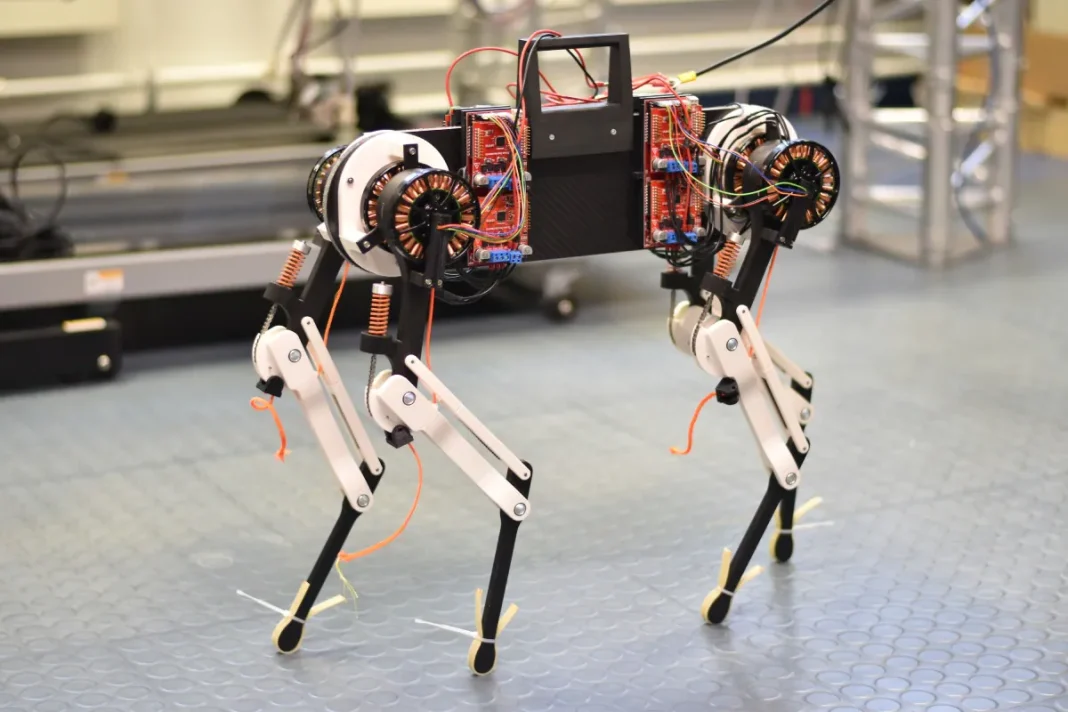Following in the footsteps of Boston Dynamics’ robot dog, scientists have created yet another dog-sized four-legged robot that can walk. Just like newborn animals stumble and stammer as they learn to use their legs for the first time, the robot dog ‘Morti’ learns from its experiences, improving and adapting with time. In just an hour, the robot dog can learn to walk.
To fill in the gaps in our understanding of how animals learn to walk, the researchers gave the robot dog animal-like traits and a computer that detects and corrects errors.
Newborn animals have muscle coordination networks in their spinal cords but must learn to coordinate precisely. During the first tries, the animal’s hardwired muscle coordination helps it avoid falling and injuring itself. While their muscles, joints, tendons, and ligaments gradually adjust to sustain the movement.
The scientists intended to learn more about the learning process by employing the robot dog.
An algorithm guides the robot’s learning. A food sensor delivers data to a modeled virtual spinal cord that runs as a program on the robot’s computer. It learns to walk by comparing sent and expected sensor data and adjusting its motor control patterns in real-time.
The program modifies a central pattern generator (CPG), a network of neurons in the spinal cord that produces muscular contractions without brain input in humans and animals. They aid in rhythmic actions such as walking, blinking, and digestion. When juvenile animals walk on level terrain, CPGs may be sufficient to control spinal cord movement signals.
However, if the terrain changes because of bumps or uneven surfaces, the young animals must learn when to use reflexes to avoid falling and when to revert to CPG.
The animal will stumble until this technique is perfected, but animals learn quickly. Morti learns to walk steadily in an hour and optimizes its movement patterns faster than an animal.













